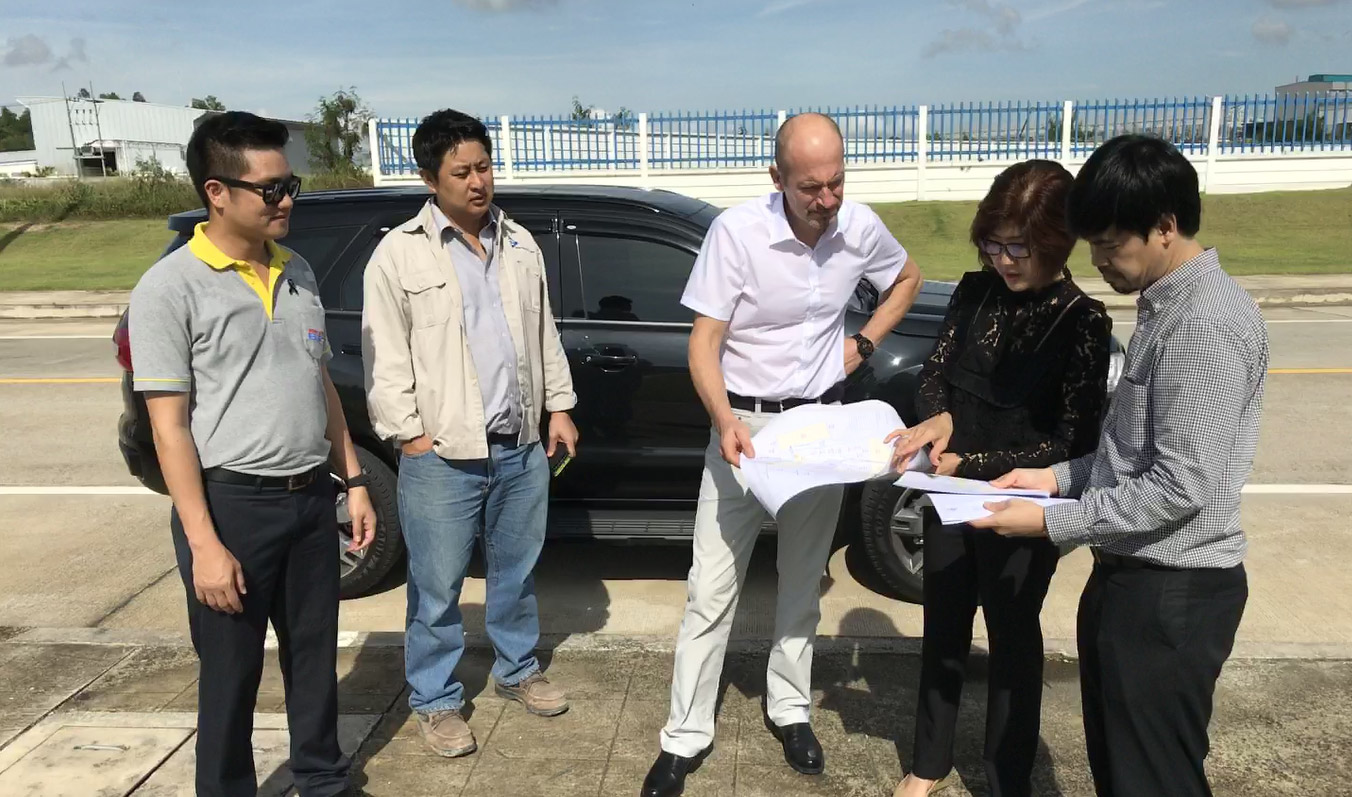“Proper preparation is better than acting hastily” This basic principle is valid especially for direct investments in foreign countries (FDI). Three points are what decides about success and failure.
- The study of the legal and technical feasibility of the planned project;
- the search for the right location;
- the study of the internal requirements for the execution of the project and its organization.
In the first part of the articles series, I have described the efficient process and the structuring of the criteria for a feasibility study of a planned direct investment in one or several targeted countries in Asia. Today, I want to deal with the search for a location and its evaluation as a next step of the risk minimization.
The Location Evaluation
In principle, the real search for the location starts after the decision of investment has already been made for a certain country. The location evaluation assesses, therefore, the advantages and disadvantages of alternative locations within the chosen country of investment while the feasibility study in the first instance supports the choice of the country for investment according to the relevant framework of conditions. The choice of location, as an independent step, always comes into consideration when either a previous comparative feasibility study has been overstrained due to additional various location studies, or for other reasons, the country for investment has already been decided on as “without an alternative.” The latter, however, is seldom. If the country for investment is already decided, then my Tip 1 Recommendation 6: If the country for investment is already decided with the requirement of a feasibility study of the project, it is economically and timewise efficient, to combine the feasibility study with the choice of location. So if you concern yourself with the framework in a certain country, then it makes sense to explore and evaluate certain locations at the same time. Both studies have the target to, in the end, identify the ideal location for the investment in the chosen country. Within a country, it is, however, possible that regions with totally different advantages and disadvantages for investors exist. Every investor will additionally determine different requirements to the location that would be perfect for him. While the one investment f.e. is dependent on the vicinity of qualified suppliers, another company will rather target the vicinity and the short-term possibility of deliveries to his customers. Export-orientated productions, on the other hand, will value the vicinity of a deep-sea harbor while labor-intensive productions rather prefer a peripheral location with the respective low cost of wages. Whoever is dependent on the local development, will set a high significance on the vicinity of a technical university and the availability of engineers. Manufacturers of special machinery will prefer industrial areas with mass production that can be won as customers for special machinery and its maintenance. Therefore, it is valid, that also concerning the choice of location it is not done with a study of “general criteria”. There is no “standard program” for the evaluation of a location. Moreover, the criteria must again be individually aligned towards the specific undertaking and its specific requirements. Therefore, my statement is for Tip 2 Recommendation 7: also the search and study of location start with a workshop and definitive definitions and prioritization of the choice criteria according to A (“Must”), B (important) and C (“nice to have”). Not seldom, companies make the mistake and decide about the location only according to one criterion, f.e. the price of land, the vicinity of a harbor or the cost of labor. Mostly this happens because this one criterion actually has a big significance and the deciding persons simply have not (yet) recognized the other criteria as important for the subsequent operation. These criteria all of a sudden gain importance with the “start of production (SOP)” or at the negotiations with the authorities about tax exemption. It is annoying if you have purchased cheap and good industrial land, only to find out later that, especially in this region exemption from tax or import duties, is only available to the extent of a period that is reduced by 5 years. It is just as irritating if the construction costs are suddenly, due to the composition of the soil, 30% higher than planned, for example, caused by 20 meter deep foundations being necessary. A decision about a location can turn out to be totally unlucky if – again as an example – during the rainy season the property, that lies below the street level, is regularly flooded, or every 3-5 years flooding washes away even complete production lines or the material storage. Therefore, commitment and prioritization of the choice criteria are decisive for the clever choice of location. Of significance are or can be for example:
- The vicinity airports, deep-sea harbors, railway connections or highways
- The vicinity of typical „clusters“ of certain supply industries
- The vicinity focal points of potential customers (f.e. Car industry)
- The classification of the location for governmental investment support (tax and duty exemption)
- The vicinity of technical universities for a collaboration and for the recruitment of competent professionals
- Availability and costs of competent professionals
- Possibility to buy or rent buildings for the production
- Technical service and production installations
- Accessibility of the location for employees (, public transport)
- Life quality for western management and their families (schools, apartments, , recreational areas, medical care)
- Cost of industrial property
- Possibilities of usage according to the land development plan (that is really in multiple Asian countries)
- Security from flooding during the rainy season
- Nature of the soil (necessary depth of the fundaments up to 20 m 30 % of the construction cost)
- Environmental pollution of the building plot
- Available land and its cuts in industrial areas
- Costs and security of the electrical supply (frequency of black-outs, brown-outs, security of the network)
- Availability of natural gas
- Disposal of wastewater
- Regulations concerning environmental burden
- Industry friendliness/corruption level of the local authorities
- Transportation costs for supply and deliveries of container stations (for avoidance of costs due to empty trips)
The list could be randomly extended. It is important that all criteria are recognized during the entry workshop, and their relevance is categorized. When substantial criteria are not fulfilled at a location, the study of this specific location can then be closed at this point. That saves expenditure for the study and, therefore, money and time. Tip 3 Recommendation 8: A professional location evaluation should offer two or three options to the company with a clear evaluation of the pros and cons of each option and a decision suggestion.

The author Dr. Gunter Denk was himself, for 25 years, a responsible businessman and lead a German branded company with several locations in Europe and Asia. In the year 2000, he took, after fusion, the executive responsibility for a company that is noted at the stock-exchange in China. 2004, he founded the SANET ASEAN ADVISORS, a group of industry consultants at 5 locations in Southeast Asia. The group accompanied and accompanies under his leadership various direct investments of market introduction projects in china and Southeast Asia. At least as significant as with the feasibility study is also the knowledge about the typical local risks for the evaluation of location. Someone that never had anything to do with flooding, significance of soil conditions for construction costs, the influence of “town mayors” towards the operational activities, etc., will possibly experience “unattractive” surprises once he has already bound himself to a location financially. Here also a sentence concerning the costs: A careful evaluation causes at least just as much expenditure as a feasibility study. It is connected to extended “field work”. The expenditure also amounts here, depending on the task formulation, between 25,000 and 30,000 Euro. As expressed in the above recommendation 6, saving potential is revealed in the combination of the feasibility study and location evaluation, due to partly similar factual conditions being examined. As an important instrument of risk management and considering the repercussions of the location towards investment support, construction costs, labor costs and various operative requirements, these costs are actually justified.

